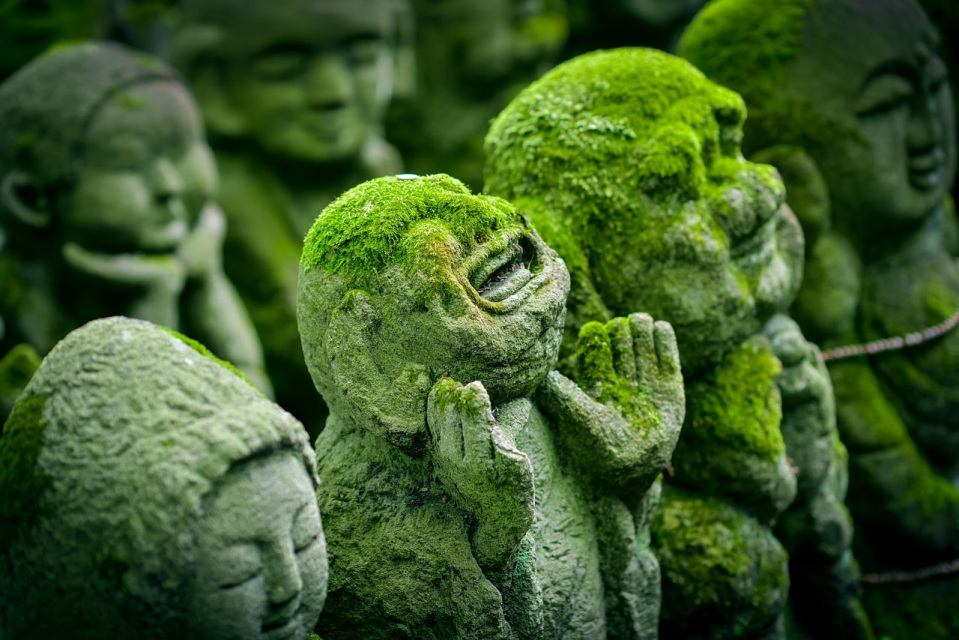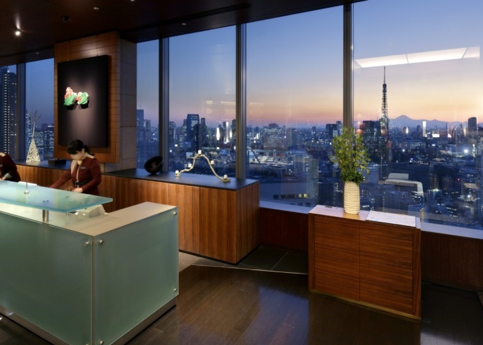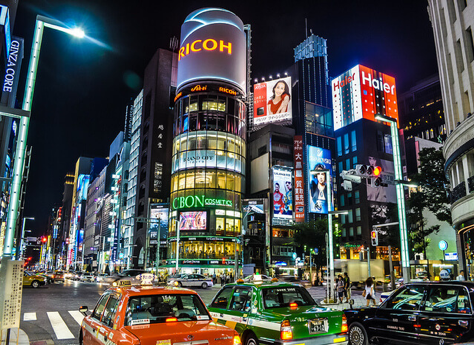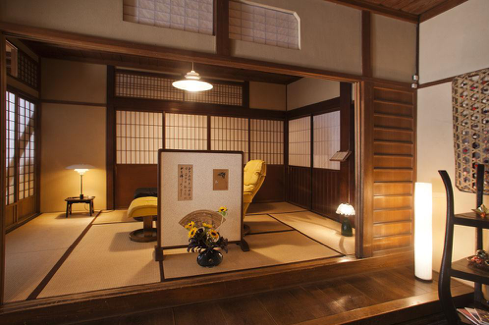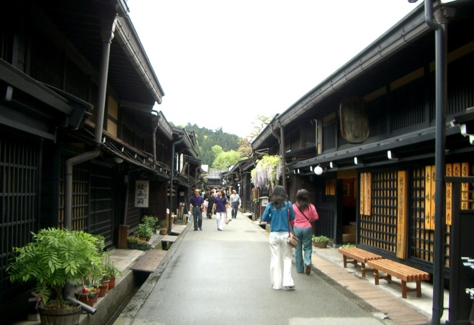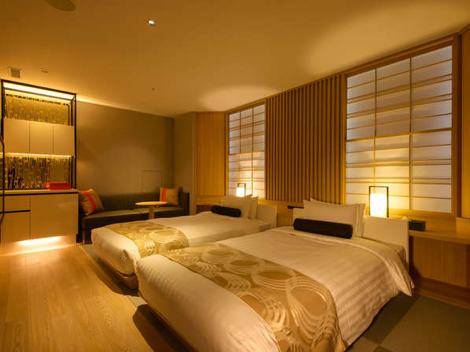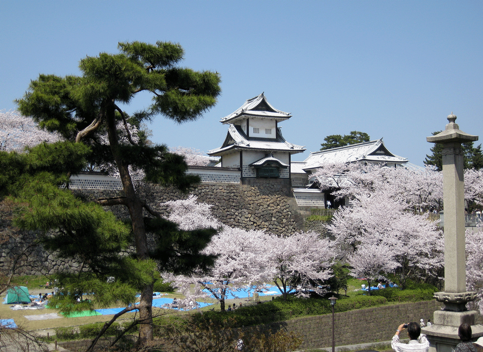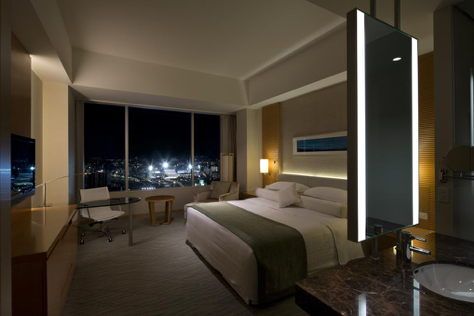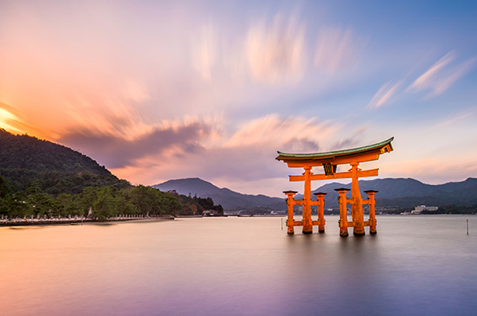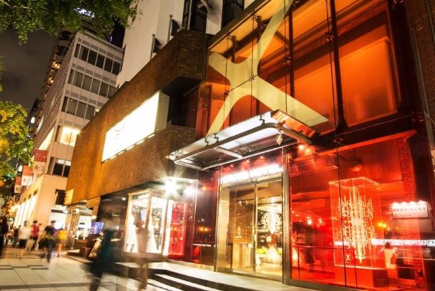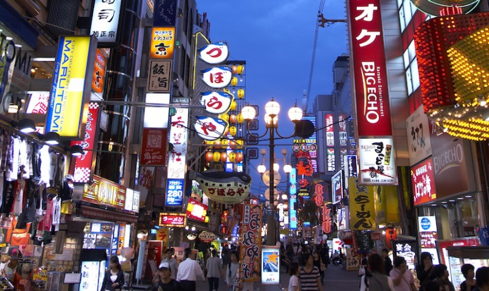Traditional & Contemporary Japan
$0.00
Unavailable
per item
Highlights:
See the iconic sites, cultural heritage and natural wonders that define Japan. Wander past Tokyo’s impressive skyscrapers and Osaka’s neon-lit streets, and then explore the cities’ historic temples and traditional gardens.
Visit Shirakawago’s traditional thatched farmhouses and get an in-depth tour of Kyoto’s historic shrines and temples. Partake in a tea ceremony, sip sake, sample sushi and sleep in ryokans for a truly authentic Japanese experience.
See the iconic sites, cultural heritage and natural wonders that define Japan. Wander past Tokyo’s impressive skyscrapers and Osaka’s neon-lit streets, and then explore the cities’ historic temples and traditional gardens.
Visit Shirakawago’s traditional thatched farmhouses and get an in-depth tour of Kyoto’s historic shrines and temples. Partake in a tea ceremony, sip sake, sample sushi and sleep in ryokans for a truly authentic Japanese experience.
SKU:
Explore: TRADITIONAL AND CONTEMPORARY JAPAN
Customizable Itinerary - 15 Days (from $6,157 / person)
Day 1: Depart USA
Today you board your aircraft bound for Tokyo where you begin your exploration of the essence of Japan
Day 2: Arrival in Tokyo
After your arrival in Toko you will be met by our representative who will facilitate your transfer into Tokyo and your hotel which overlooks the Imperial Palace. The rest of the day is left open so you can relax and adjust
Day 3: Parks, Shrines and Boutiques of Tokyo
Meet up with your guide at the hotel to visit some of Tokyo’s major attractions. Start at Hamarikyu, a Japanese garden whose wide collection of seasonal flowers makes it one of the most visited gardens in Toko. Take a break at Nakajima-no-Ochaya and enjoy a cup of freshly made green tea as the guide describes the history of the chado tea ceremony. From there you board a boat for a scenic cruise to Asakusa the old Geisha district featuring many traditional shops. Finish the visit at the Meiji shrine which is close to Harajuku and Omotesando two of the city’s shopping districts
Breakfast
Day 4: Tokyo and Kamakura
In the morning you board a train for the 50 minute ride to Kamakura, a seaside town that was one of Japan’s former capitals. The town is home to many ancient shrines and temples and other structures like the daibutsu a giant bronze Buddha standing 40 feet tall. Return to Toko and spend time at some of the world’s best museums and art galleries
Breakfast
Day 5: A scenic train ride to Takayama
After breakfast you will journey to Takayama a small town nestled high in the Hida Alpine region of Gifu Prefecture. The first part of the trip will be by bullet train and then you connect to a train that offers one of the most scenic train journeys in Japan. While in Takayama you will be staying at a traditional Japanese-style inn called a ryokan. In the afternoon we recommend strolling in the shitamachi where the streets are lined with century-old merchants’ homes and sake breweries. Stop by one of the breweries for a taste or line up for the famous Hida beef sushi at one of the specialty food stalls. In the evening enjoy a typical multi-course kaiseki dinner at your ryokan Breakfast and Dinner
Day 6: Food, Culture and Cycling
In the morning you will explore some of the food shops in Takayama with a knowledgeable guide, learning about the town’s colorful history and familiarizing your taste buds with some local delicacies. The walking tour includes visits to a tofu seller, a rakugan shop (traditional Japanese candies0 and a sake brewery. In the afternoon you get the chance to explore the streets and outskirts of Hida Furukawa on a bicycle together with a local guide. With an impressive view of the surrounding Japanese Alps it is well known for its traditional architectural design of its old buildings and Machiya-style houses built centuries ago. You will have the chance to cycle around this mountain village passing by rice paddies and old houses giving you a closer look at the lifestyle in this rural region.
Breakfast and Dinner
Day 7: Shirakawago and Kanazawa
Today your driver will be waiting to drive you to Shirakawago, a UNESCO World Heritage Site famous for its gassho-zukuri farmhouses. Gassho-zukuri translates as “constructed like hands in prayer” which is represented through the farmhouses’ steep thatched roofs. This architectural style developed over many generations. The roofs were constructed without any nails and the steeple roofs are designed to withstand large amounts of snowfall. These houses are private homes but some are open to the public. In the afternoon continue to Kanazawa, a castle town that thrived in the 17th Century as the center for culture and the arts.
Breakfast
Day 8: A Day in Kanazawa
After breakfast you can start your exploration of Kanazawa by visiting the pristine Kenroku-en Garden which is ranked as one of the top three Gardens in Japan. Here you will find the oldest fountain in the country, a couple of teahouses and a large villa used to be the retirement home of one of the richest clans in Kanazawa. Adjacent to the garden is Kanazawa Castle accessed through the Ishikawa-mon Gate. Take time for lunch at Omicho Market known throughout Japan for its fresh seafood and fine sushi. In the afternoon head across town to the old Samurai district of Kanazawa where you visit Nomura House a restored residence of a high ranked samurai family. You can enjoy freshly made green tea on the second floor while admiring the Japanese garden below.
Breakfast
Day 9: The Train to Hiroshima
You have some free time in the morning before boarding a train for Hiroshima. Upon arrival in the afternoon you transfer to your hotel where the evening is left open
Breakfast
Day 10: Miyajima and the Peace Memorial Park
In the morning you take s short ferry ride from mainland Hiroshima to Miyajima, a small sacred island located in the Seto Inland Sea. Explore the island and sample some local delicacies like oysters, saltwater eel and maple leaf-shaped cakes. Start with Itsukushima Shrine, declared as one of Japan’s three most beautiful views. The shrine is designed on a pier-like structure and dates back to the 6th Century. Its huge vermillion o-torii gate seems to be floating in the water during high tide. Walk towards the mountains to visit Daisho-in, the most visited Buddhist temple on the island. Along the stairs is a row of spinning sutras that lead up to the main hall. It is believed that anyone who spins these sutras will be blessed. Early in the afternoon head back to Hiroshima to visit Peace Memorial Park and Museum. There is also the poignant A-Bomb dome and the Children’s Peace Monument
Breakfast
Day 11: Hiroshima to Kyoto
You depart for the station and a bullet train to Kyoto the cultural capital of Japan. Home to 2,000 shrines and temples with 17 UNESCO World Heritage sites, the city was spared the bombing that many other cities experienced and can therefore show an authentic Japan from another era. After checking into your hotel you join a small group cooking class to learn some of the techniques and ingredients of Japanese cooking. Finish the day with a Geisha performance at a traditional theatre
Breakfast
Day 12: Iconic Landmarks of Kyoto
Your tour starts with a visit to Nijo castle that was built in the early 1600’s. It is known for its Momoyama-style architecture, decorated sliding doors and ‘chirping nightingale’ floors. You next visit Ryoanji Temple with its serene rock garden and its role as home to the Myoshinji School of the Rinzai Buddhist sect. Just a short distance away is the stunning golden pavilion completely covered in handmade gold-leaf. After a stop for lunch you visit the Kiyomizu-dera Temple and enjoy the view from its verandah sitting 40 feet high and constructed without any nails. Complete your day with a stroll through the busy streets of the Higashiyami district, a collection of narrow alleyways lined with local stores, souvenir shops, small eateries and other merchants.
Breakfast
Day 13: Kyoto Culture and the Deer of Nara
This morning offers a unique and unforgettable chance to learn about Japanese culture in a Machiya, a traditional Kyoto-style wooden townhouse which has been beautifully restored. You start with a short tour of the house and lean about its architecture before trying on a traditional kimono the iconic Japanese garment. While in the kimono you will take part in a tea ceremony led by a tea master, a quintessential part of Japanese Culture. You will get an insight into Japan’s tea culture from making the tea to the movements involved in serving it. You then get an introduction to origami, the Japanese art of paper folding. In the afternoon you take the train to Nara, another former capital. You visit Nara Park where a large amount of tame deer roam free. It is also home to Todaiji, the world’s largest wooden building
Breakfast
Day 14: The Food Culture of Osaka
In the morning you board a train for the short train ride to Osaka, Japan’s food capital. Check into your hotel and then begin exploring this fun town, a marked contrast from serene Kyoto. Walk through Osaka’s liveliest and most colorful shopping and dining streets starting with Doguyasuji, a unique market that sells anything related to food; from pots and pans and other kitchenware to the lifelike plastic food models widely used by restaurants. Across the street is Sennichmae, a lane filled with small eateries that serve all the Osaka delicacies such as takoyaki, okonomiyaki and the famed fugu (blowfish). From there you get to Hozenji Yokocho, a short, narrow lane lined with expensive restaurants. You then emerge on to the very busy Dotonbori, a restaurant mecca which has long been referred to as Osaka’s former “entertainment and pleasure’ district. Once you have got your bearings you can return at night to graze through the eateries and many food stalls that spring up at night.
Breakfast
Day 15: Return to USA
You have the morning to explore on your own, shop for souvenirs and pack for the return trip. You will be transferred to Kansai airport which is built on a man-made island. Here you board your flight bound for the USA
Breakfast
Today you board your aircraft bound for Tokyo where you begin your exploration of the essence of Japan
Day 2: Arrival in Tokyo
After your arrival in Toko you will be met by our representative who will facilitate your transfer into Tokyo and your hotel which overlooks the Imperial Palace. The rest of the day is left open so you can relax and adjust
Day 3: Parks, Shrines and Boutiques of Tokyo
Meet up with your guide at the hotel to visit some of Tokyo’s major attractions. Start at Hamarikyu, a Japanese garden whose wide collection of seasonal flowers makes it one of the most visited gardens in Toko. Take a break at Nakajima-no-Ochaya and enjoy a cup of freshly made green tea as the guide describes the history of the chado tea ceremony. From there you board a boat for a scenic cruise to Asakusa the old Geisha district featuring many traditional shops. Finish the visit at the Meiji shrine which is close to Harajuku and Omotesando two of the city’s shopping districts
Breakfast
Day 4: Tokyo and Kamakura
In the morning you board a train for the 50 minute ride to Kamakura, a seaside town that was one of Japan’s former capitals. The town is home to many ancient shrines and temples and other structures like the daibutsu a giant bronze Buddha standing 40 feet tall. Return to Toko and spend time at some of the world’s best museums and art galleries
Breakfast
Day 5: A scenic train ride to Takayama
After breakfast you will journey to Takayama a small town nestled high in the Hida Alpine region of Gifu Prefecture. The first part of the trip will be by bullet train and then you connect to a train that offers one of the most scenic train journeys in Japan. While in Takayama you will be staying at a traditional Japanese-style inn called a ryokan. In the afternoon we recommend strolling in the shitamachi where the streets are lined with century-old merchants’ homes and sake breweries. Stop by one of the breweries for a taste or line up for the famous Hida beef sushi at one of the specialty food stalls. In the evening enjoy a typical multi-course kaiseki dinner at your ryokan Breakfast and Dinner
Day 6: Food, Culture and Cycling
In the morning you will explore some of the food shops in Takayama with a knowledgeable guide, learning about the town’s colorful history and familiarizing your taste buds with some local delicacies. The walking tour includes visits to a tofu seller, a rakugan shop (traditional Japanese candies0 and a sake brewery. In the afternoon you get the chance to explore the streets and outskirts of Hida Furukawa on a bicycle together with a local guide. With an impressive view of the surrounding Japanese Alps it is well known for its traditional architectural design of its old buildings and Machiya-style houses built centuries ago. You will have the chance to cycle around this mountain village passing by rice paddies and old houses giving you a closer look at the lifestyle in this rural region.
Breakfast and Dinner
Day 7: Shirakawago and Kanazawa
Today your driver will be waiting to drive you to Shirakawago, a UNESCO World Heritage Site famous for its gassho-zukuri farmhouses. Gassho-zukuri translates as “constructed like hands in prayer” which is represented through the farmhouses’ steep thatched roofs. This architectural style developed over many generations. The roofs were constructed without any nails and the steeple roofs are designed to withstand large amounts of snowfall. These houses are private homes but some are open to the public. In the afternoon continue to Kanazawa, a castle town that thrived in the 17th Century as the center for culture and the arts.
Breakfast
Day 8: A Day in Kanazawa
After breakfast you can start your exploration of Kanazawa by visiting the pristine Kenroku-en Garden which is ranked as one of the top three Gardens in Japan. Here you will find the oldest fountain in the country, a couple of teahouses and a large villa used to be the retirement home of one of the richest clans in Kanazawa. Adjacent to the garden is Kanazawa Castle accessed through the Ishikawa-mon Gate. Take time for lunch at Omicho Market known throughout Japan for its fresh seafood and fine sushi. In the afternoon head across town to the old Samurai district of Kanazawa where you visit Nomura House a restored residence of a high ranked samurai family. You can enjoy freshly made green tea on the second floor while admiring the Japanese garden below.
Breakfast
Day 9: The Train to Hiroshima
You have some free time in the morning before boarding a train for Hiroshima. Upon arrival in the afternoon you transfer to your hotel where the evening is left open
Breakfast
Day 10: Miyajima and the Peace Memorial Park
In the morning you take s short ferry ride from mainland Hiroshima to Miyajima, a small sacred island located in the Seto Inland Sea. Explore the island and sample some local delicacies like oysters, saltwater eel and maple leaf-shaped cakes. Start with Itsukushima Shrine, declared as one of Japan’s three most beautiful views. The shrine is designed on a pier-like structure and dates back to the 6th Century. Its huge vermillion o-torii gate seems to be floating in the water during high tide. Walk towards the mountains to visit Daisho-in, the most visited Buddhist temple on the island. Along the stairs is a row of spinning sutras that lead up to the main hall. It is believed that anyone who spins these sutras will be blessed. Early in the afternoon head back to Hiroshima to visit Peace Memorial Park and Museum. There is also the poignant A-Bomb dome and the Children’s Peace Monument
Breakfast
Day 11: Hiroshima to Kyoto
You depart for the station and a bullet train to Kyoto the cultural capital of Japan. Home to 2,000 shrines and temples with 17 UNESCO World Heritage sites, the city was spared the bombing that many other cities experienced and can therefore show an authentic Japan from another era. After checking into your hotel you join a small group cooking class to learn some of the techniques and ingredients of Japanese cooking. Finish the day with a Geisha performance at a traditional theatre
Breakfast
Day 12: Iconic Landmarks of Kyoto
Your tour starts with a visit to Nijo castle that was built in the early 1600’s. It is known for its Momoyama-style architecture, decorated sliding doors and ‘chirping nightingale’ floors. You next visit Ryoanji Temple with its serene rock garden and its role as home to the Myoshinji School of the Rinzai Buddhist sect. Just a short distance away is the stunning golden pavilion completely covered in handmade gold-leaf. After a stop for lunch you visit the Kiyomizu-dera Temple and enjoy the view from its verandah sitting 40 feet high and constructed without any nails. Complete your day with a stroll through the busy streets of the Higashiyami district, a collection of narrow alleyways lined with local stores, souvenir shops, small eateries and other merchants.
Breakfast
Day 13: Kyoto Culture and the Deer of Nara
This morning offers a unique and unforgettable chance to learn about Japanese culture in a Machiya, a traditional Kyoto-style wooden townhouse which has been beautifully restored. You start with a short tour of the house and lean about its architecture before trying on a traditional kimono the iconic Japanese garment. While in the kimono you will take part in a tea ceremony led by a tea master, a quintessential part of Japanese Culture. You will get an insight into Japan’s tea culture from making the tea to the movements involved in serving it. You then get an introduction to origami, the Japanese art of paper folding. In the afternoon you take the train to Nara, another former capital. You visit Nara Park where a large amount of tame deer roam free. It is also home to Todaiji, the world’s largest wooden building
Breakfast
Day 14: The Food Culture of Osaka
In the morning you board a train for the short train ride to Osaka, Japan’s food capital. Check into your hotel and then begin exploring this fun town, a marked contrast from serene Kyoto. Walk through Osaka’s liveliest and most colorful shopping and dining streets starting with Doguyasuji, a unique market that sells anything related to food; from pots and pans and other kitchenware to the lifelike plastic food models widely used by restaurants. Across the street is Sennichmae, a lane filled with small eateries that serve all the Osaka delicacies such as takoyaki, okonomiyaki and the famed fugu (blowfish). From there you get to Hozenji Yokocho, a short, narrow lane lined with expensive restaurants. You then emerge on to the very busy Dotonbori, a restaurant mecca which has long been referred to as Osaka’s former “entertainment and pleasure’ district. Once you have got your bearings you can return at night to graze through the eateries and many food stalls that spring up at night.
Breakfast
Day 15: Return to USA
You have the morning to explore on your own, shop for souvenirs and pack for the return trip. You will be transferred to Kansai airport which is built on a man-made island. Here you board your flight bound for the USA
Breakfast
